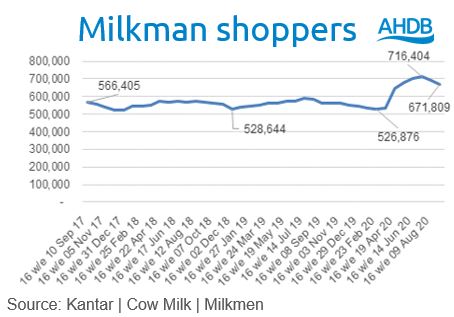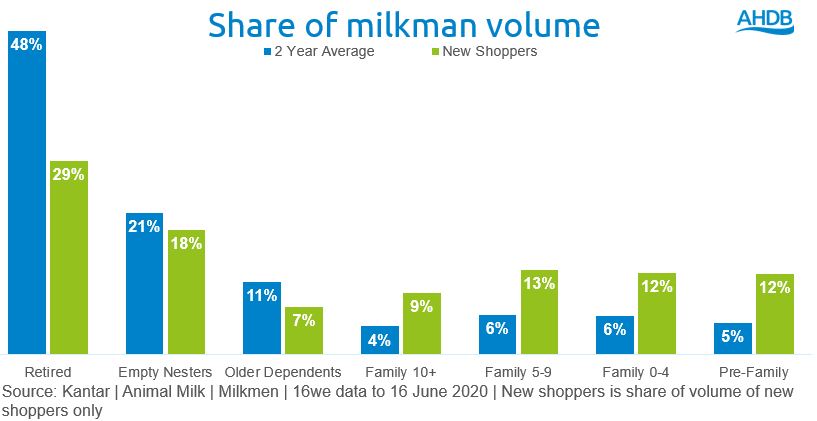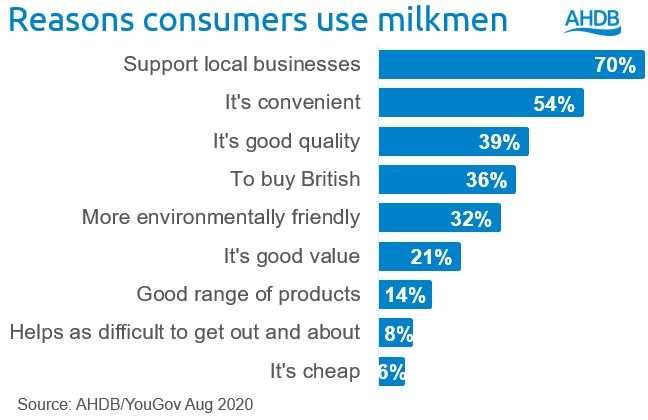The return of the milkman?
Monday, 28 September 2020
2020 has marked profound changes in how we behave, shop and consume food. The way we shop for dairy products has been no exception.
During lockdown, as consumers tried to minimise trips out of the house, and retailers encountered availability issues we saw key growth in customers of the traditional milkman. According to Kantar the number of customers using milkmen went from 527,000 to 716,000 and many sites had to close for new customers as demand outstripped supply. As restrictions lifted in mid-summer, there was a fall in the number of customers but still many more customers were using milkmen compared to the beginning of the year.
The interesting thing about this growth was the shift in demographics of these customers. Traditionally milkmen tend to be used by older, wealthier, retired consumers. However, during this phase of the pandemic, acquisition of new customers was primarily driven by pre-families and families, bringing a new audience to doorstep delivery.
In a recent survey the key reasons given for using a milkman were supporting local businesses (70%), and convenience (54%), with quality, British and environmentally friendliness also featuring. With a drive for sustainability being at the forefront of people’s minds (especially amongst the younger, family audience) it is perhaps not surprising that services offering milk in non-plastic packaging and using electric vehicles for distribution should thrive. However, a much higher average price compared to the supermarkets has always been a limiting factor for mass-uptake. But in a pandemic, all bets are off, and consumers are becoming increasingly willing to pay more for convenience and safety.
As tightening of regulations start to come in again, with the Rule of Six and local lockdowns becoming more prevalent there is clear potential for further continued development of the home delivery market for milk and other essentials.





